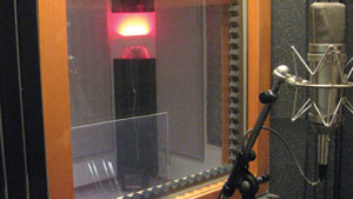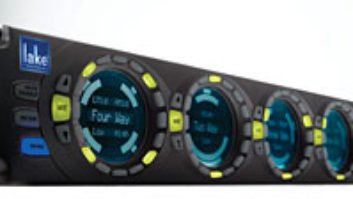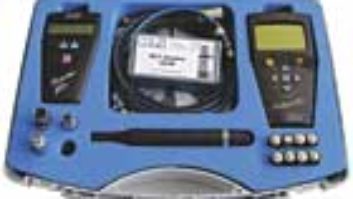In many ways, professional audio performs as a microcosm of the capitalist system: The market picks the winners and, with some exceptions, tends to reward those manufacturers whose products offer the best technology at the best price. However, there is one sector of the pro audio market where the government-rather than technological advances and customer needs-has the biggest influence over product development. Wireless microphone manufacturers must not only compete against each other, but must also keep a close watch on changing rules and regulations set by the Federal Communications Commission (FCC), which regulates radio, television, wire, satellite and cable communications. (For more info, visit www.fcc.gov.)
During the past 30 years, improved RF technology and a number of favorable FCC rulings have opened up the airwaves to wireless transmissions, setting the stage for the current state of wireless in pro audio. After a rocky start (who can forget how bad Mick Jagger’s early ’70s wireless mics sounded?), wireless microphones have become an accepted fact of live performance, and more than a dozen manufacturers now compete in the still-growing market. But, thanks to recent FCC regulations, television is fast crowding into the bandwidth that wireless mic systems depend on. Digital TV is expected to gobble up 1,600 secondary channels by 2006, licensed and unlicensed two-way radio use is on the rise, and even hospitals are now claiming channels that were once available to touring sound system operators.
Despite these challenges-or perhaps because of them-wireless microphone systems are better than ever. Many wireless systems now offer 16 channels or more and a vastly improved array of transmitters, receivers, amplifiers and antennae that now rival the sound of traditionally wired systems. Thanks to FCC rulings dating from the ’70s, most of today’s wireless systems operate in the uHF band, although increasing channel congestion may lead to an increase in VHF-based systems. To assess the current state of the industry, we asked manufacturers to pick their best or most representative wireless system. For more information on these and other models, see the manufacturers sidebar for Web addresses and phone numbers.
The AKG WMS81 uHF Wireless Microphone System ($805 to $2,040, depending on options) is a half-rack model with a rackmount kit that offers 15 selectable frequencies, switchable mic/line outputs, interchangeable mic elements, tone code squelch, RF and AF signal strength indicators, and a removable rear-mounted antenna. The WMS81’s transmitter packs operate on two AA batteries for up to ten hours and feature adjustable frequency and gain control, power on/off, mute switch and a signal peak indicator. Options include a wide-band antenna splitter, directional antenna, external antenna, three modular mic capsules and a bodypack system that includes two head-worn mics, two lavalier mics, and a wind/brass instrument mic.
The 7000 Series Multichannel uHF True Diversity Wireless System ($975 bodypack version, $995 handheld) from Audio-Technica offers as many as 100 switch-selectable PLL-synthesized channels above the 700MHz frequency band and is designed for live performance, public address, aerobic instruction and other applications. Both bodypack and handheld versions include the ATW-R73 receiver featuring balanced XLR and unbalanced 11/44-inch jacks, adjustable volume and squelch controls, and the ability to select the superior signal from one of two independent receiver sections. The bodypack option includes a wide selection of lavalier, head-worn and gooseneck-mounted microphones to choose from.
Azden offers the 311DRH VHF ($375), a new half-rack wireless receiver that adds an on/off switch, RF/Audio/TD display, squelch control and detachable antennae to the company’s popular 311DR receiver. Featuring true diversity reception and a frequency range of 25 VHF channels, the 311DRV VHF also sports output level controls, balanced XLR and unbalanced 11/44-inch outputs, and a 12VDC power input. Optional transmitters include the 31HT handheld, 31LT bodypack lavalier and the 31XT, a plug-in converter that turns any dynamic handheld mic into a wireless unit.
Beyerdynamic has released four Diversity Wireless Systems, including the u 400 uHF ($1,999). As many as 16 frequencies can be accessed within a single uHF channel with the u 400, and optional antenna distribution amplifiers make the system well-suited for integration with existing wireless systems. The half-rack u 400 receiver features a multifunction LCD for viewing chosen frequencies, RF and Vu level and antenna data, and is available in handheld and pocket transmitter formats.
At this month’s NAMM show in Los Angeles, CAD (a division of CTI Audio) will unveil its 40-channel digital wireless system, which operates at 2.45 GHz and features an advanced ASIC-based RF drive engine. The receiver features a large, four-color vacuum fluorescent display of metering and full operational status. Available transmitters include handheld, head-worn and lavalier/beltpack versions-the latter offering both instrument and mic inputs.
Electro-Voice’s new MS3000E Wireless Microphone System ($1,038) is a uHF-based unit operating between 690 and 720 MHz (channels 50-59) on custom-tuned frequencies using E-V’s Secure-Phase signal reception technology. Featuring a signal-to-noise ratio of 104 dB, the MS3000E offers a choice of handheld or bodypack transmitters, with a number of microphone models to choose from. The receiver has LED audio input and output level meters, diversity circuitry LED indicators, rear-panel squelch adjustment control, and balanced-XLR and unbalanced 11/44-inch audio connectors.
The JW300 Series Wireless Microphone System from Jensen Music Industries is available in nondiversity ($279), diversity headset ($373), and true diversity lavalier ($369) models. The tabletop/rackmountable units feature balanced XLR and 11/44-inch unbalanced connectors, as well as front-mounted detachable antennae, dual audio level and signal reception meters, and level controls. The JW300’s rubberized mic body also provides an improved grip for performers. A further refinement is the use of contact points inside the mic itself (rather than traditional wiring) for protection from the road punishment wireless mics are often subjected to.
Lectrosonics offers the uT200VM ($1,435) wireless microphone/transmitter, which uses an internal dipole-type antenna and features machined brass and aluminum internal parts, signal attenuator, tone controls and a durable PVC housing. Additional features include gain adjustment, wide-range input limiting, a low-noise Motorola OP amplifier, and 256 synthesized frequencies to choose from. The uT200VM can also suppress input signal peaks up to 30 dB above full modulation. The Lectrosonics uDR200B wireless receiver ($4,295) employs fixed and synthesized frequency agility to avoid interference problems, and the included LecNet software allows for remote computer control of the receiver.
Available in bodypack, lavalier and handheld formats, Nady Systems’ new uHF 760 System ($1,150 for the handheld system, bodypack and lavalier models are $1,030 each) is a 160-channel uHF wireless system that features user-switchable uHF channels between 746 and 952 MHz and true diversity operation. The 760 boasts 120dB dynamic range, balanced mic/line selectable XLR and 11/44-inch unbalanced connectors, and easy-to-read, two-color, five-segment LED meters for monitoring audio levels and group/channel settings. Nady claims an operational range of up to 500 feet in line of sight, and the half-rack receiver can be easily rackmounted.
As we were going to press, we heard that Peavey was planning to launch a line of wireless products at this month’s NAMM show. No details were available in advance-look for more information in future issues.
The True Mobility Wireless Microphone System ($949 handheld or lavalier, $969 headset) from Sabine includes a 30-channel diversity receiver with a NiMH-rechargeable battery charger built in the receiver’s front panel. The system is available in both uHF (30-channel) and VHF (16-channel) formats. A range of optional microphones, antennae, and mic and transmitter accessories are available for the single-rackspace system, and True Mobility systems incorporate Sabine’s popular FBX Feedback Exterminator circuitry for live feedback control. Auto de-esser and compressor/limiters are standard equipment, as is dual-squelch circuitry.
The Samson uHF Synth Series Six Wireless System ($2,199 dual receiver plus beltpack, handheld, and distribution amp options) operates as many as 101 simultaneous channels, can be remotely controlled via PC with Samson’s Wireless System Manager software and features an RF spectrum analyzer, dbx noise reduction, frequency selector and squelch control. The Synth Six’s automatic voltage-sensing power supply works without adapters anywhere in the world, and a wide number of popular handheld, lavalier and headset microphones are available.
Sennheiser’s flagship 5000 Series EM1046 Wireless System ($89,580) is a multichannel wireless system that features eight microprocessor-controlled diversity receiver channels in a single mainframe. The four-rackspace 1046 receiver, which operates on both uHF and VHF channels, can be daisy-chained for easy expansion and offers an optional computer connection kit for remote operation and monitoring. Also included is HiDyn Plus noise reduction with 112dB signal-to-noise ratio on each channel and both LED and alphanumeric displays. Transmitters include the SKM 5000 supercardioid condenser handheld with interchangeable mic heads and the SK 50 bodypack with Lemo connector for lavalier, headset or hair-worn mics.
Shure’s u24/58 Wireless System ($3,980 dual channel, $2,390 single) is a uHF-based wireless solution that features a hefty 191 user-programmable frequencies to choose from (international versions may vary). The system offers programmable LCD displays on both receivers and transmitters to indicate group/channel settings and transmitter battery status. Four Shure mics are available for the handheld version (SM58, SM87A, Beta 58A, and Beta 87A) and several Shure mini-lavalier and head-worn mic options will work with the bodypack version of the system. Via the receiver’s screen interface, users can display and control frequency settings, enter performer’s names and modify squelch settings. Transmitters and receivers offer a programmable lock feature to guard against accidental changes and two independent RF sections increase sensitivity and reception while reducing transmission dropouts. Finally, the system is also offered with an optional uA888 accessory that allows users to remotely monitor and control system parameters via a computer interface.
Three new UHF wireless microphone products make up Sony’s latest system offering. The WRT-807A Handheld Microphone ($780) is a dynamic uHF mic designed specifically for the touring pro. Compatible with all 800 MHz-range Sony wireless receivers, the WRT-807A features 94 PLL-synthesized uHF frequencies, an LCD and locking on/off switch. The $930 MB-806A is a single-rackspace modular uHF tuner frame (with built-in antenna divider) that houses as many as six uHF diversity tuner modules, giving each an individual XLR and mix output. The MB-806A features a global mic/line switch for all outputs and an antenna gain switch to compensate for distance and RF conditions. The matching WRu-806A Diversity Tuner ($490) allows automatic setting of all channel modules loaded into the frame to the correct coordinated group-plan frequency when used in conjunction with the MB-806A. AF and RF level indicators are included, and the use of a converter circuit reduces battery ramped-down performance.
Finally, the USR-100 UHF Wireless Microphone System ($540 to $1,600) from Telex, is available with beltpack or handheld mic options packed with its SH-100 Posi-Phase(tm) II receiver. The microprocessor-controlled uSR-100 system offers 100 channel frequencies to choose from on TV channels 47, 48, 58 and 59-frequencies that Telex claims to be the least used television channels. The receiver’s Programmable Integrated Circuit controls all VCO, RF stage tuning elements, RF signal strength, audio level metering, diversity phase relationship, channel selection, and Telex’s smart-diversity circuitry for precise control and automatic self-tuning.






